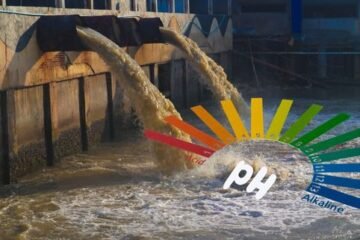DISSOLVE OXYGEN IN WATER
Dissolved oxygen (DO) in water refers to the amount of oxygen gas (O2) that is dissolved in the water. Dissolved oxygen is a crucial parameter in aquatic environments as it is essential for the survival of aquatic life, including fish and other aquatic organisms. The amount of dissolved oxygen in water is influenced by several factors, including temperature, pressure, atmospheric oxygen levels, and the presence of pollutants.
In general, a higher water temperature and lower atmospheric pressure reduce the solubility of oxygen in water, leading to lower dissolved oxygen levels. On the other hand, higher atmospheric pressure and increased aeration (e.g., from moving water or air bubbles) can increase the dissolved oxygen levels.
The appropriate range of dissolved oxygen levels in water depends on the type of aquatic environment and the type of aquatic life present. In general, a dissolved oxygen level of 5 mg/L or more is considered acceptable for most aquatic life, while levels below 5 mg/L can be stressful or lethal. It is important to monitor dissolved oxygen levels in aquatic environments, as low levels can indicate a lack of oxygen and the presence of pollutants, while high levels can indicate over-aeration or the presence of oxygen-demanding pollutants. Monitoring dissolved oxygen levels can help to ensure the health and sustainability of aquatic ecosystems.
What is the DISSOLVED OXYGEN (DO) Level?
DO stands for Dissolved Oxygen in water. It refers to the amount of oxygen gas (O2) that is dissolved in water, typically measured in milligrams per liter (mg/L) or parts per million (ppm). In the context of wastewater treatment, STP refers to Sewage Treatment Plant. The DO level in STP is an important parameter to monitor as it helps to ensure that the biological processes within the treatment plant are functioning correctly, and that there is enough oxygen available to support the growth of the microbes responsible for breaking down the pollutants in the sewage. An appropriate DO level in STP helps to maintain a healthy and efficient wastewater treatment process.
What happens if it increases or decreases?
If the Dissolved Oxygen (DO) level in a sewage treatment plant (STP) increases, it can have a positive impact on the wastewater treatment process. A higher DO level means that there is more oxygen available to support the growth of the microbes that break down pollutants in the sewage. This can result in improved efficiency of the treatment process and better removal of contaminants.
On the other hand, if the DO level decreases, it can have a negative impact on the wastewater treatment process. A lower DO level means that there is less oxygen available for the growth of the microbes, which can lead to reduced efficiency of the treatment process and poorer removal of contaminants. In extreme cases, low DO levels can result in the death of the microbes, causing the treatment process to stop altogether. Therefore, it is important to monitor the DO level in a STP and ensure that it remains within an appropriate range to support the effective functioning of the wastewater treatment process.
Ranges of DO Level?
The appropriate range of Dissolved Oxygen (DO) levels in a sewage treatment plant (STP) depends on various factors, such as the type of treatment process used, the temperature and pH of the water, and the type and amount of pollutants present. However, as a general guideline, the DO level in an STP should be maintained between 2 to 8 mg/L or ppm.
In aerobic treatment processes, a DO level of 2-3 mg/L is typically considered the minimum acceptable value, while a level of 5-8 mg/L is considered optimal for efficient treatment. If the DO level drops below 2 mg/L, it can result in reduced efficiency of the treatment process and poor removal of contaminants. On the other hand, if the DO level exceeds 8 mg/L, it can result in oxygen saturation, leading to reduced efficiency of the treatment process and increased energy costs. It is important to note that the appropriate DO level can vary based on the specific requirements and conditions of each treatment plant, and regular monitoring and adjustment may be necessary to ensure optimal treatment efficiency.


